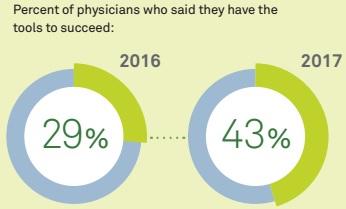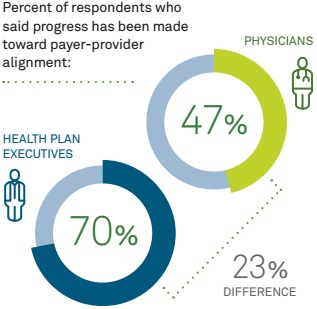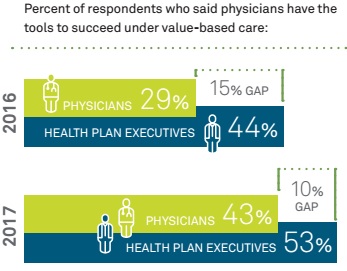Providers Lack Tools, Payer Alignment for Value-Based Purchasing
Over one-half of providers said they do not have the right tools for value-based purchasing as well as payer alignment with the transition, a survey stated.

Source: Thinkstock
- Healthcare providers still lack the necessary tools for value-based purchasing success with only 43 percent of providers reporting that they have access to the appropriate solutions, a recent Quest Diagnostics and Inovalon survey uncovered.
However, the survey of 452 primary care providers and health plan executives showed that the providers have moved forward with value-based purchasing implementation. The number of providers stating that they have the appropriate value-based purchasing tools is up from just 29 percent in 2016.

Source: Quest Diagnostics and Inovalon
“We’ve documented progress over the past year, notably with tools available to aid the transition, but work clearly remains,” stated David Freeman, the General Manager of Information Ventures at Quest Diagnostics. “Extending the capabilities of existing technologies, most notably EHRs, and shared HIT [health IT] investments by health plans and providers may speed physician adoption of value-based care.”
Providers agreed that the additional value-based purchasing work that remains rests with EHR system limitations and payer alignment.
Just 54 percent of surveyed providers said that EHR systems have everything physicians need for value-based purchasing success. Moreover, 70 percent of providers feel that EHR systems have not proved to advance patient outcomes.
The top EHR system limitation was a lack of quality and performance data for individual patients, providers stated. Even though 87 percent of providers and health plans executives agreed that the data was key to value-based purchasing success, about 65 percent of providers stated that performance and quality information by patient was still their top needed insight.
Surveyed providers and health plan executives also identified the following insights physicians needed at the point-of-care for value-based purchasing success:
• List of care gaps that impact quality measures with 29 percent of respondents
• More information about individual patient histories with 21 percent
• Data that helps providers input accurate diagnostic codes with 12 percent
Despite EHR system shortcomings, the survey revealed that the systems have potential to improve value-based purchasing implementation. Approximately 71 percent of providers reported that they would be willing to spend more time using health IT systems if their EHR systems could produce insights for individual patients.
Healthcare providers also lacked robust payer alignment, the survey found. Nearly 70 percent of surveyed health plan executives reported advancements in payer-provider alignment. Yet just 47 percent of providers agreed.

Source: Quest Diagnostics and Inovalon
The survey demonstrated key payer-provider misalignments related to value-based purchasing implementation. For example, over one-half of health plan executives said that physicians have the necessary tools for value-based purchasing success, representing a gap of 10 percentage points between providers and payers.

Source: Quest Diagnostics and Inovalon
While just over one-half of providers felt EHR systems have everything physicians needs for value-based purchasing, three-quarters of health plan executives said the same thing.
Despite significant differences in opinion, provider-payer alignment is crucial to value-based purchasing success, according to 83 percent of survey respondents.
To facilitate alignment around the value-based purchasing transition, health plan executives expressed interests in co-investment for health IT implementation. About 85 percent of health plan executives said that co-investment in health IT systems by providers and payers would improve value-based purchasing adoption.
Although challenges remain, providers and health plan executives did agree that value-based purchasing adoption will move forward regardless of a potential Affordable Care Act repeal. Almost 82 percent of respondents stated that the value-based purchasing transition will continue despite political uncertainties.
Respondents also agreed that value-based purchasing adoption is limited. Only 29 percent of participants believed that the healthcare industry is a value-based system.
Although this value is slightly up from one-quarter of respondents in the 2016 survey.
The survey also showed that providers with more healthcare experience felt less confident in the industry’s value-based purchasing transition. Sixteen percent of providers practicing 21 years or more said the industry was a value-based care system versus 31 percent of providers working for 20 years or less.
“Through better alignment and more co-investment of time and resources, there is potential to speed the adoption of a healthcare system centered on the value patients receive, not on the quantity of services delivered,” the survey concluded.
